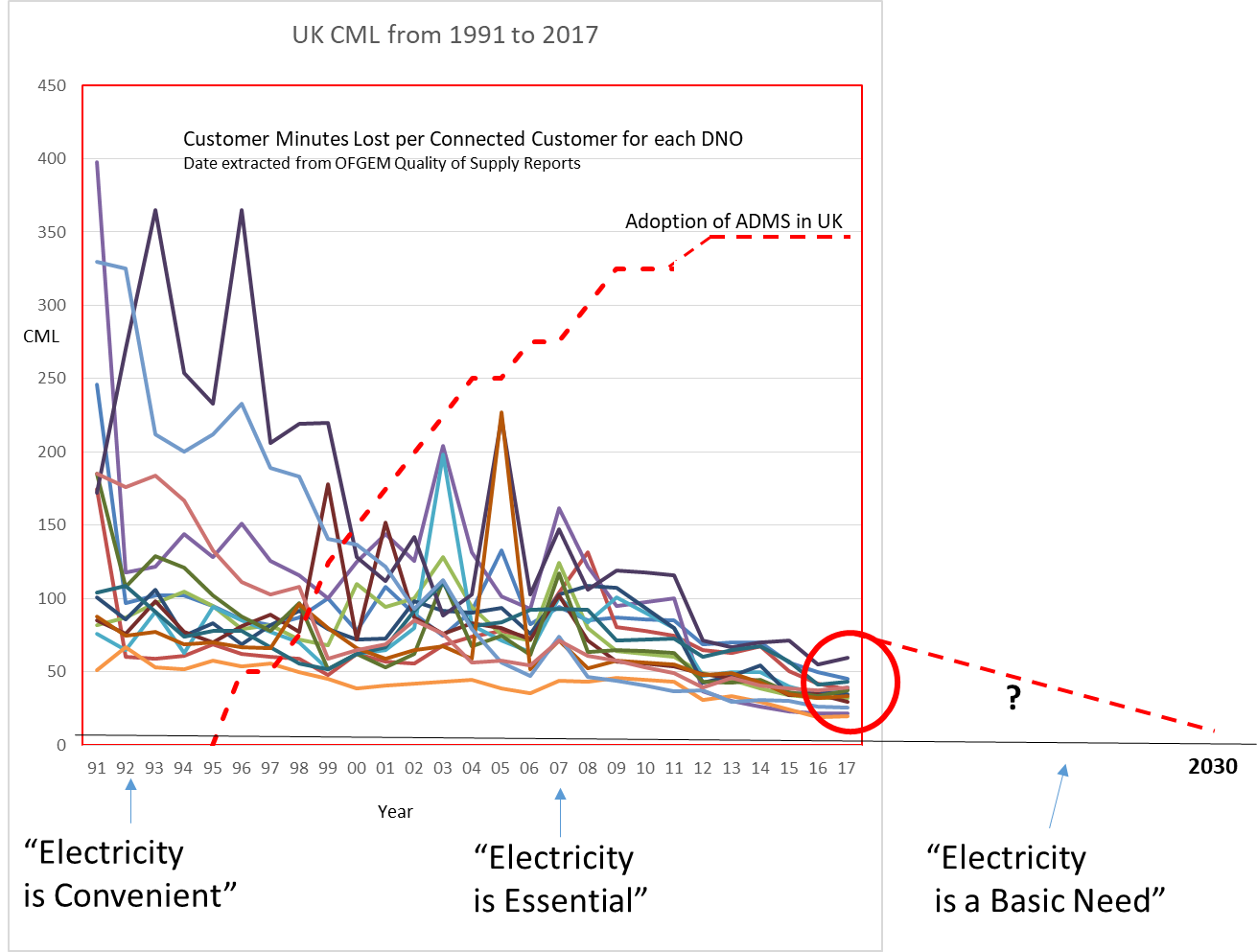
DISTRIBUTION NETWORK RELIABILITY
Now many utilities have been making great strides
in improving reliability in the last 20 years and even in a conversation I had
with a Regulator a couple of years back there was a sense that the need for
incentives was now being questioned. Job Done! I disagree, those who know
me may not be surprised, but I will attempt to justify my concerns.
All are agreed that removal of fossil fuels will
increase the load on electricity networks. With increased load comes
increased customer dependency, it has been a feature of recent blackouts that
other societal effects occur when electricity supplies are lost, for instance
electric train disruption during major faults. The August 2019 outage in
England affected over 1 million customers electricity supply for 25 to 45
minutes, but it affected train passengers for hours as they were stranded until
the signalling system and train systems could be restarted. As we move to
electric vehicles we could wake up to a partially charged car battery and cold
houses. Working from home also increases the expectations and dependency on
supply reliability (and decent bandwidths).
Electricity used to be a luxury, then it became a
convenience, then it became essential and now it is becoming a basic need in
our lives as precious as drinking water, shelter, security and food. This
expectation for the “ever presence” of electricity will drive further CI and
CML improvement.
Suburban and rural customers bear the brunt of the
current levels of unreliability, and their experience is masked by being
averaged inside the CI and CML figures with reliable urban parts of the
network.
The next CI/CML improvement drive could focus on
those suburban and rural networks and this may not just be more undergrounding
and interconnection, but could include a role for local generation to provide
local resilience during outages. For this to be possible we need full
fault isolation to be achieved from all possible directions, even for radial
networks. Radial networks could be redefined into areas of microgrid operation
each with a normally closed microgrid isolation point from the main radial
supply.
On loss of supply, the intelligent feeder
automation would fully isolate the fault, restore supplies as it does at
present, but now it has options to restore ”downstream” radial networks as
well, by opening the microgrid isolators and invoking the ”downstream “
microgrids to restore within their zone of influence.
These microgrid isolators would be more complicate
devices with power electronics capable of re-synchronisation prior to reclosure
after the fault repair. Each microgrid would require a controller, demand
response options, storage, and local reactive power and could spawn rural high
tech jobs installing maintaining and monitoring those microgrids .
Currently a lot of people are concerned about safe
operation of networks with embedded microgrids, but this methodology recognises
and manages these risks and this strategy could enable bidding “Restore “ and
“Dynamic” products into the flexibility market and cause a step change
improvement in rural network reliability.
Derek Macfarlane is interested in your responses….
Post Views : 137